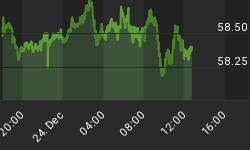A passed bail out package could have a positive impact only because something is being done.
However, one of the stock market's biggest current concerns is for something to get done that unlock's the credit freeze. Why? Because, the credit squeeze is starting to trickle down to corporations which is affecting the ability for some to meet payroll.
When an economy slows down, sales slow down. When sales slow down, accounts receivables start aging. When receivables age, corporations have to borrow to get the operational cash flow to meet current obligations and sometimes payroll. The bail out does not directly address unfreezing the credit problem.
Initially, the sector most affected by a credit squeeze is the Banking Sector. Investors should key an eye on the BKX (Banking Index) to get a reading on how financial stock values are reacting relative to a Bail Out AND the credit freeze.
So today we will have an in-depth look at the BKX and what has been happening to it. Our first chart shows the BKX going back to 2001.
2002 was a terrible time when the market hit the lows during a tough bear market. To get an understanding how much trouble the Banks/Financials are in now, see how the BKX has fallen far below the lowest level seen in 2002. The market is saying that this is a very serious problem.
Next, take a look at the blue dashed box that I drew around the recent activity, and then look at the next chart.

The above boxed in area is enlarged below and it shows the daily swings on the BKX since the beginning of September.
Note what happened on September 18th. and 19th. The BKX hit a low of 58.62 on the 18th. and then
hit a high of 83.43 on the 19th. The volatility swing was EXTREME with a low to high move of 42.3% in a two day period. To put it in perspective, imagine what would happen if DJI or the S&P had a 40% swing in a two days.
Ten days after the BKX's high, it dropped back down to the low again. This is a market sector in extreme turmoil and it is effecting the S&P 500 because the S&P has about a 14% financial sector exposure.
As our politicians argue and disagree about a bail out solution, the BKX is reacting violently. If you want to know the market's reaction to the bail out at any point in time, watch the intra-day charts on the BKX and the XLF (ETF). You'll will learn more about what the market really thinks about the bail out plan than what any talking head says on television.

















